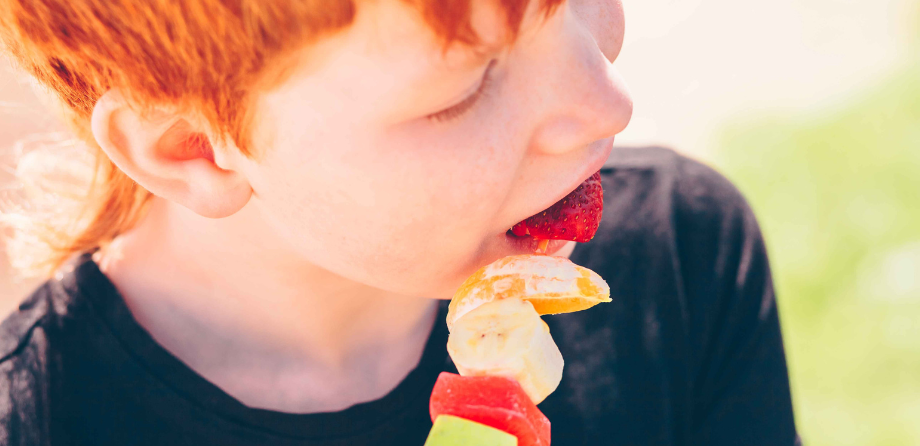
Early years activity: Fruit kebabs (The Very Hungry Caterpillar)
This week’s activity brings The Very Hungry Caterpillar story to life through a fun and interactive fruit kebab making session. As children create their own fruit kebabs, they’ll reinforce the story’s themes of healthy eating and develop their fine motor skills. It’s a great way for children to connect with the story and enjoy a nutritious snack at the same time!
Fruit kebabs activity learning aims
- Story comprehension- remembering the fruits the caterpillar ate
- Encourage healthy eating
- Develop hand eye coordination and fine motor skills.
Resources you will need
- A copy of The Very Hungry Caterpillar by Eric Carle
- Fruit (e.g. strawberries, sliced grapes, banana slices, melon, apple)
- Wooden skewers (make both ends blunt before giving to the children)
- Paper plates
- Pictures of the fruit from the book (optional).
Fruit kebabs activity outline
- Read the story of The Very Hungry Caterpillar and encourage the children to name the different fruits it eats along the way
- Explain to the children they are going to make their own fruit kebabs for snack time
- Talk to the children about why we need to eat healthy food to keep our bodies working
- Invite the children to cut the fruit into chunks (under adult supervision)
- Model descriptive language about fruits to broaden children’s vocabulary e.g. juicy strawberries, sweet melon, etc.
- Give each child a skewer and invite them to create their own colourful, delicious kebab
- Enjoy eating the kebabs together.
Fruit kebab activity extension ideas
Babies would enjoy the story and then have a taste of some of the fruits, in an age and stage appropriate way.
NDNA products to support you with this activity
PANCo – training
Disclaimer: Activities with children must always be risk assessed, including for allergies or choking. Children must always have adequate supervision. Resources and materials must always be appropriate for children’s age and stage of development.
- Activity
- MyNDNA
Similar Articles
Top Tips for Inclusive Christmas Celebrations
The Christmas period is a wonderful opportunity to celebrate cultural diversity - helping children learn…
Read more 
Early years activity: Comparing natural objects
Maths can be found in every aspect of nature and it provides endless opportunities for children…
Read more 

